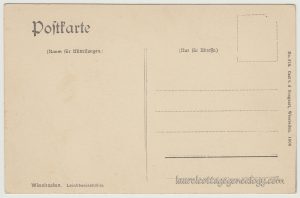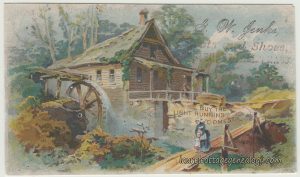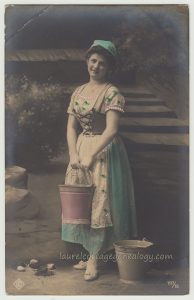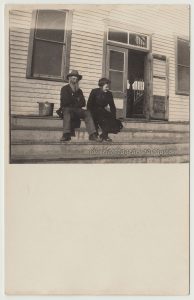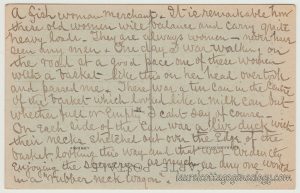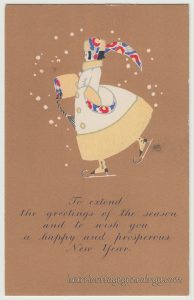Photograph by John G. Feeser, Hanover, PA. Circa 1880s.
Size of photo: About 4 x 6″ Size including cardboard frame: About 5 x 7″
These are digital images, front and back, graciously donated by one of our readers. The family name that might belong to this beautiful young lady may be from among the following:
-Smith
-Myers
-Beitzel
-Underwood
-Wilt
Here’s to hoping someone will recognize this woman. But in any case, this is a lovely portrait showing wonderful details: We wonder if this was taken for a special event, evidenced by the corsage of roses she wears on the left lapel of her coat, with its two large buttons perched on the other lapel. In peering at an enlargement, the writing on the top button, one feels, is almost readable. Beneath the coat, which is heavily gathered at the shoulders, is a bodice in velvet, gathered at the neck and likely waist, creating soft folds. The bodice is set off by a wide flowery ribbon at the neck, which is tied into a bow in back. Her wavy brown hair is parted down the middle, and is probably long but gathered up from behind. She gazes slightly up to her right, from clear blue or green eyes, underneath straight brows.








